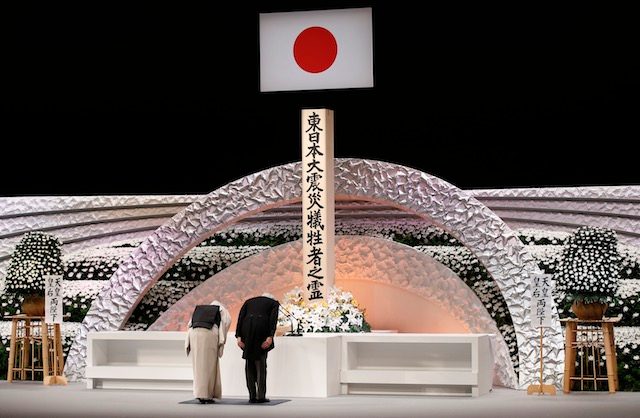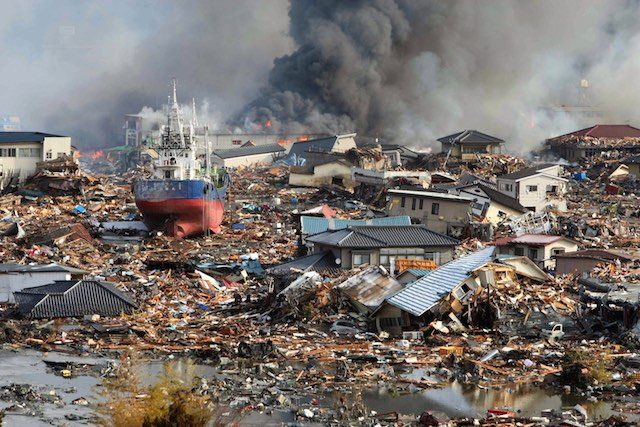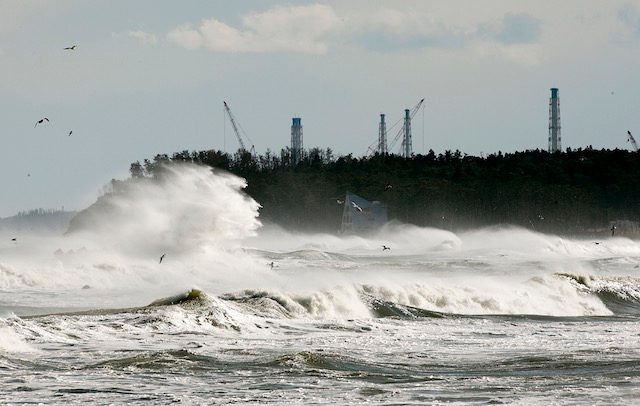SUMMARY
This is AI generated summarization, which may have errors. For context, always refer to the full article.

SHICHIGAHAMA, Japan (2nd UPDATE) – Japan marked the fourth anniversary Wednesday, March 11, of the quake-tsunami disaster that swept away thousands of people and sparked a nuclear crisis, a tragedy that has left visible scars on the landscape and continues to wreak misery for many.
Remembrance ceremonies were held in towns and cities around the disaster zone and in Tokyo, where Emperor Akihito and Empress Michiko led tributes to those who died in Japan’s worst peace-time disaster.
Television footage showed victims and volunteers joining their hands in prayer near the shell of a tsunami-hit building in the northeastern port town of Minamisanriku, one of the many stark reminders of the destruction.
A national minute of silence followed the wail of tsunami alarm sirens at 2:46 pm local time (0546 GMT), the exact moment a 9.0-magnitude undersea quake hit.
Its gigantic force unleashed a towering wall of water that travelled at the speed of a jet plane to the coast. Within minutes, communities were turned to matchwood, and whole families drowned.

“The situation surrounding disaster victims remains severe,” the emperor told the ceremony.
“It is important to continue making efforts to build a safer land without forgetting this lesson.”
The National Police Agency said a total of 15,891 people are confirmed to have died in the disaster, with another 2,584 still listed as missing. Human remains are still occasionally found.
For thousands of relatives, the absence of a body to mourn makes the process of moving on much harder, and some continue to carry out their own physical search.
“Somebody needs to do this, walking along the shore,” said Takayuki Ueno, who at the weekend combed a desolate winter beach for the bones of his three-year-old son.
In Shichigahama, 28 police and coastguard officers offered a silent prayer Wednesday morning before they began their search for the bodies of two townspeople still missing.
“We have found bones on the beach but they are mostly from animals,” said Hidenori Kasahara, a police officer who was sifting through the sand.
“We still hope to find (the bodies) for the sake of their families,” he told Agence France-Presse.
Nuclear disaster

The nuclear disaster that the tsunami caused at the Fukushima plant continues to haunt Japan and color national debate.
The crippled plant remains volatile and the complicated decommissioning process is expected to last for decades.
Although there is little evidence so far, fears persist over the effect on health of radioactive leaks.
After successfully removing spent fuel rods from a storage pool at Fukushima, plant operator Tokyo Electric Power is still struggling to handle an ever-increasing amount of contaminated water.
Japan’s entire stable of nuclear reactors were gradually switched off after the disaster.
While Prime Minister Abe’s government and much of industry is keen to get back to atomic generation – largely because of the high costs of dollar-denominated fossil fuels to an economy with a plunging currency – the public is unconvinced.
A nuclear watchdog has so far given the green light to refiring four reactors at two plants, but the actual restarts will be delayed until a months-long public consultation is finished and local authorities give their blessing.
In the shadow of Fukushima Daiichi, former residents of the evacuated town of Namie placed flowers at a temporary altar and bowed toward the sea. In the background crushed cars and the remains of flattened houses still littered the landscape.
Despite government pledges of billions of dollars in reconstruction aid, progress in disaster-hit regions has been slow; some communities remain ghost towns, and thousands of disaster refugees struggle to cope.
According to the government, nearly 230,000 people are still displaced – many of them by the nuclear disaster – of whom 80,000 live in temporary housing.
“Reconstruction is shifting to a new stage,” Abe told a news conference on Tuesday.
“We will help disaster victims become self-sustaining,” Abe said. “As the government, we will provide the best possible support.” – Antoine Bouthier, AFP / Rappler.com
Add a comment
How does this make you feel?
There are no comments yet. Add your comment to start the conversation.